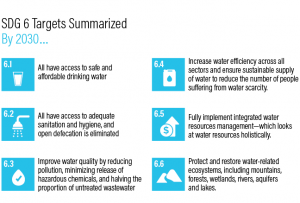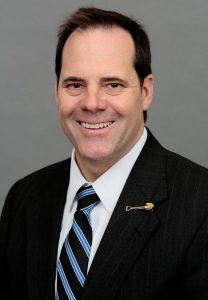When I was in school, I read a short story called A Sound of Thunder by Ray Bradbury. In the story, a character named Eckels travels through time to the Jurassic Period to hunt dinosaurs. While there, Eckels steps on a butterfly. Upon returning to his own time period, he finds everything as he left it besides a few small, ominous details. Bradbury lets his readers’ imaginations make the connection between a dead butterfly in the time of the dinosaurs and the subsequent chain of events that spans the eons (145 million years!) to ultimately cause the change in Eckels’ present.
The Jurassic Period that Eckles experienced was not a welcoming environment. The climate was hot and muggy. There were giant dragonflies and centipedes as long as your arm. Reptiles, some extremely large and very mean, roamed the land, air, and sea. Had humans existed as a species then, survival would have been difficult.
All these millions of years later, after a decidedly well-timed asteroid led to the rise of humans, after generations of technological advancement, after transcending our planet and landing on the moon – is survival any easier? It’s not a simple answer in many parts of the world. According to the United Nations:
- About 50% of the world’s population – almost 4 billion people – experience severe water scarcity at least 1 month per year.
- 3 in 10 people lack access to safe drinking water, and approximately 3 billion people lack basic sanitation services such as toilets or latrines.
- More than 80% of human-generated wastewater is discharged into rivers or seas without any treatment, creating massive water pollution issues.
- More than 800 children each day, and more than 2 million people each year, die from preventable diarrheal diseases caused by poor hygiene and unsafe water.
- Extending basic water and sanitation services to those without them would cost about $28.4 billion per year from 2015 to 2030.
So, what is to be done? Since we haven’t invented time travel yet, we are stuck dealing with the problems of our epoch. Before I end my term as 2018-2019 Water Environment Federation (WEF; Alexandria, Va.), President, I want to offer you a few simple approaches you can take to help save the world.
Thinking Globally
In my first column as WEF president, I wrote about how water is the central thread that ties together people of different cultures, experiences, and perspectives. These ties lead to new partnerships and discoveries that enhance water management for the entire world. As a federation, this same spirit is the basis of WEF – separate member associations connected by a common purpose.
I don’t believe that connection stops at the U.S. coasts or at our northern and southern borders. According to WEF’s vision statement, we are aiming to create “a community of empowered professionals creating a healthy global water environment.”

Water professionals have a direct hand in meeting SDG 6, which calls for universal access to water and sanitation by 2030. However, as clean water is the foundation for combating world hunger, poverty, and a host of other issues, water professionals also contribute toward progress on many other SDGs. Photo courtesy of United Nations.
To that end, the WEF Board of Trustees this summer unanimously approved a new position statement supporting the United Nations’ Sustainable Development Goals (SDGs). This set of 17 specific targets seeks to promote universal access to food and water, social justice, environmentally sustainable decision-making, and more by 2030.
I would argue that water professionals play the greatest role of any profession in supporting these goals. Let me explain. SDG 6 calls for achieving universal and equitable access to clean water and safe sanitation for all. But many of the other SDGs – eliminating poverty, better protecting wildlife, creating environmentally sustainable cities, and more – cannot be accomplished if we fail to move the needle on SDG 6.
After all, how can we chip away at world hunger without stable sources of water to irrigate crops? What can we do to eradicate waterborne diseases without people and infrastructure equipped to thoroughly strip away chemicals and pollutants? How can we achieve gender equality when millions of women and girls spend upwards of 40 billion hours each year simply trying to secure enough water for their families?
This demonstrates once again this idea of “connectedness,” the inter-relatedness of all people and the planet. The 17 SDGs are not separate, they are inter-related. Attaining one means simultaneously solving problems in several other SDGs.
Acting Locally
With all the everyday stressors in our lives, it can be easy to ignore how our skills, experiences, and comforts come with a responsibility. There is perhaps nobody better equipped in the world than a WEF member to innovate, fabricate, and communicate solutions to SDG 6, and by extension, create a better world.
United Nations Secretary-General António Guterres summed up this responsibility well during a speech about SDG 6 last year:
“We cannot continue to take water for granted and expect to achieve the Sustainable Development Goals. Solutions exist and new technologies are in the pipeline to improve how we manage water for nations, communities, and households,” Guterres said. “But often these solutions are inaccessible for those who need them most, perpetuating inequity within and among countries.”
So, is this just a “developing world” problem? Not at all. Let’s look at Guterres’ words again: “…perpetuating inequity within and among countries.” Inequity is alive—and growing—in the United States, one of the most developed nations in the world. Inequity exists in access to job opportunities, education, health care, healthy food, and adequate drinking water and wastewater infrastructure.
I interpret Bradbury’s time-travel story as an allegory about how inter-related everything in the world is — not just across time, but across geography and across species.
You can help protect public health and the environment around the entire world by being mindful of the work you perform every day, and through your actions as a global citizen. Whether you choose to step on a butterfly or set it free sets into action a chain of events that impacts someone or something in another place or time.
For example, the Des Moines (Iowa) Metropolitan Water Reclamation Authority is nearing completion of a project that will turn the biogas it produces into compressed natural gas that can be used as a renewable vehicle fuel. This will eliminate the equivalent of about 1,500 gasoline vehicle fill-ups per day. The move reduces the burning of fossil fuels and helps mitigate the effects of climate change. Mitigating these changes here can ultimately result in reduced flooding in Madagascar and fewer droughts in Australia. Or as I like to say, “What happens in Des Moines matters in Madagascar.”
The good times are fragile if we don’t take care of what we have. As an old Tibetan proverb advises, “cure the illness which is not yet an illness.”
If you plan to attend WEFTEC 2019 in September, check your WEFTEC Conference Program for details about a new, SDG-focused certificate. Participate in at least three technical sessions related to achieving the SDGs, and you can earn a certificate, demonstrating that you recognize how your work contributes to a better world.
With any luck, 145 million years from now, there will still be sci-fi authors writing about how the world once was. Let’s do our part to make sure the generations to come will be around to read about it. Water’s Worth It.
—Thomas Kunetz, WEF President 2018-2019









August 29, 2019
WEF Resources & Efforts